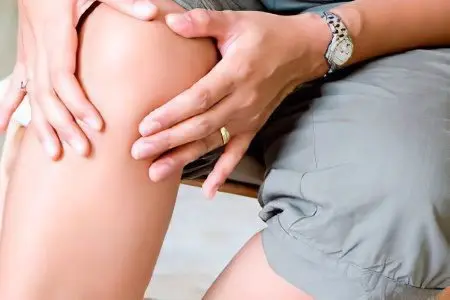
With age, people increasingly complain of such an unpleasant ailment as leg fatigue and pain in the legs. In some, the joints are sensitive to changes in the weather; in others, the foot burns after walking. To reduce these phenomena or completely get rid of them, first of all, it is necessary to establish their cause. Only a qualified doctor can understand the cause of pain in the legs.
Many people try to treat pain in the legs in the so-called general ways, but this is wrong and time can be lost, because similar symptoms in different manifestations combine about 120 different diseases of the ligaments, joints, bones and muscles.
There were cases when the patient complained of persistent pain in the knee characteristic of arthritis, but a deeper examination showed a blood disease. Also, the feeling of pain in the legs can occur due to negative transformations of the vascular system.
Diseases that cause pain in the legs in the elderly
– Flat feet. One of the most common foot problems is flat feet. It is the basis for the development of various deformities of the foot, diseases of the legs or spine. The result of flat feet in patients is often a curvature of the toes, as well as subluxations and dislocations of the foot. Over time, bones form on the thumbs, which grow over the years and deform the bone.
The patient often has problems with shoes, it becomes difficult to walk, there is a feeling as if the legs are poured with lead. It is difficult for a flat and strongly flattened foot to carry its own body, which causes frequent pain in the lumbar region and in the joints. Flat feet belongs to the category of those diseases that are much easier to prevent than to subsequently treat.
Many people acquire it due to the fact that they have worn uncomfortable tight shoes for a long time. Flat feet in the primary and secondary forms can be corrected by choosing the right shoes and arch supports, which is why older people are advised to walk in already worn shoes that are comfortable for their feet. In addition, it is useful to walk barefoot on wet sand and grass more often in order to strengthen the feet, and do special exercises to train the legs.
– Heel spurs. Yet one not uncommon condition is spikes or heel spurs. These formations are salt deposits due to metabolic disorders. Their appearance in older people is often due to age-related changes and can cause quite noticeable pain. Walking with such a spike is facilitated by special unloading rollers.
– Arthrosis. Arthrosis or osteoarthritis is also one of the most common diseases that cause pain in the legs in the elderly. There are two varieties of it. In the first variant of the disease, the joints of the fingers are affected – they thicken and look like drumsticks. In the second type of arthrosis, degenerative painful changes in the bone and joint tissue occur, developing at the site of early injuries or as a result of an inflammatory process.
For example, the patient had a broken ankle and the damaged bone was connected a little inaccurately, hence the development of the degenerative process began. Or in his youth, a person injured the meniscus in training, and by the age of sixty, he develops arthrosis of the knee joint. So if you had an injury in your youth or at any other age, then you should make every effort to get to an experienced qualified doctor who minimizes the consequences of injury. This will avoid some problems in old age.
Arthrosis can approach in different ways: some have a feeling that “the legs do not go”, others begin to hurt muscles and joints when climbing stairs. If you experience such symptoms, you should not waste time to consult a competent doctor. Gymnastics is useful for patients with arthrosis. All exercises should be light and not painful. The sensation of pain in this case means that the load has exceeded the limit required by the joints.
Pain in arthrosis in most cases appears with various loads on the joint or during movement, and with arthritis, it can also occur at rest. In the morning, at the onset of the disease, pain is sometimes felt in the hands, fingers are hard to squeeze (this symptom is more common in women, men experience similar sensations in the feet). These pains may be temporary and last for several days, but if they do not subside within two months, then you should seek medical help.
– Other diseases of the lower extremities. It is also worth noting a few other diseases. Periarthritis usually affects the tendons and is characterized by mild inflammation. With bursitis, the periarticular bags become inflamed. In particular, the shell under the kneecap suffers from it. Legs always hurt with vascular diseases – endarteriosis, endarteritis, thrombophlebitis, which lead to sclerotic changes in blood vessels.









